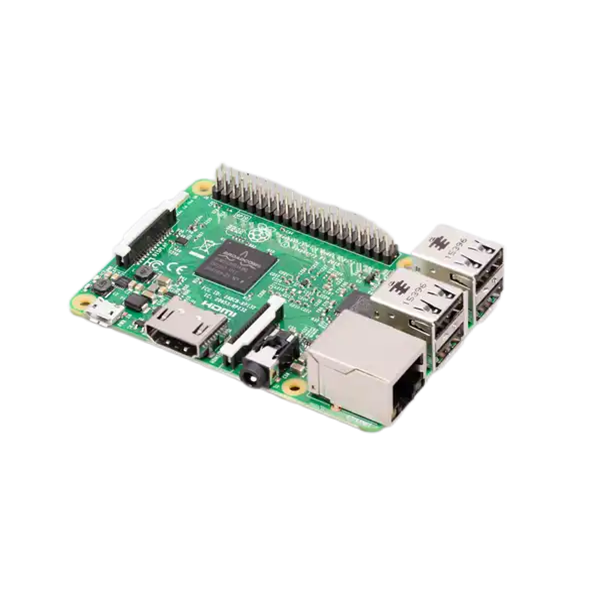
Raspberry Pi 3 Model B represents a major leap in performance and functionality from its predecessors, bringing several significant upgrades to the Raspberry Pi lineup. Here are some key details:
- Dimensions: It retains the same form factor as the Raspberry Pi 2 Model B, measuring 85.6mm x 56.5mm x 17mm.
- Processor: It features a quad-core Broadcom BCM2837 64-bit ARMv8 processor, running at 1.2GHz. This is a significant improvement over the Pi 2’s processor, offering much better performance.
- Memory: Equipped with 1GB of LPDDR2 SDRAM, providing ample memory for most applications.
- Wireless Connectivity:
- Onboard 802.11n Wireless LAN (WLAN) with a built-in antenna for easy internet access.
- Bluetooth 4.1 Low Energy (BLE), allowing for wireless communication with a variety of peripherals.
- I/O Interfaces:
- 40 GPIO pins for hardware interfacing and expansion.
- Four USB 2.0 ports for connecting peripherals.
- An HDMI port capable of 1080p video output.
- A microSD card slot for storage.
- A CSI camera connector and a DSI display connector.
- A micro USB power port, now supporting up to 2.5A for improved power management.
- An audio jack for sound output and a 3.5mm jack for composite video output.
- Storage: Uses a microSD card for the operating system and data storage, with improved support for larger capacity cards.
- Power: Requires a 5V/2.5A power supply, reflecting its higher power requirements due to enhanced features.
- Price: While more expensive than the previous models, the Raspberry Pi 3 Model B was still considered very affordable, offering excellent value for its features.
- Usage:
- Education: With its improved performance, it’s widely used in schools for teaching advanced programming, networking, and IoT concepts.
- DIY Projects: Suitable for more complex DIY projects, including media centers, retro gaming, smart home automation, and IoT devices.
- Embedded Systems: Its quad-core processor and wireless capabilities make it ideal for embedded applications requiring more processing power.
- Development: A favorite among developers for software and hardware prototyping, especially in IoT and robotics.
Key Advantages:
- Quad-core Processor: Significantly improved performance over previous Raspberry Pi models, enabling more demanding applications.
- Built-in Wireless: The inclusion of Wi-Fi and Bluetooth simplifies setup and enhances connectivity options.
- Improved Power Management: The new power management system allows for better stability and power efficiency.
- Backward Compatibility: Compatible with most Raspberry Pi cases, HATs (Hardware Attached on Top), and accessories.
Limitations:
- Heat: The more powerful processor can lead to higher heat generation, requiring adequate cooling for prolonged or intensive use.
- Memory: While 1GB is adequate for many projects, some applications might require more memory, which would necessitate external solutions.
- No Built-in USB 3.0: Despite the performance boost, it still relies on USB 2.0 ports, which can be a bottleneck for certain peripherals.
The Raspberry Pi 3 Model B was a pivotal release in the Raspberry Pi’s evolution, bringing the platform into the realm of modern computing with its enhanced processing power, wireless capabilities, and improved overall performance. This model made the Raspberry Pi even more versatile, opening up new possibilities for educational, professional, and hobbyist projects, cementing its status as a leading choice for embedded computing and IoT applications.
Notices
Compliance
Raspberry Pi 3 Model B has undergone extensive compliance testing, and meets the following European standards:
- Electromagnetic Compatibility Directive (EMC) 2014/30/EU
- Restriction of Hazardous Substances (RoHS) Directive 2011/65/EU
View and download global compliance certificates for Raspberry Pi products.
The Adopted Trademarks HDMI, HDMI High-Definition Multimedia Interface, and the HDMI Logo are trademarks or registered trademarks of HDMI Licensing Administrator, Inc. in the United States and other countries.
